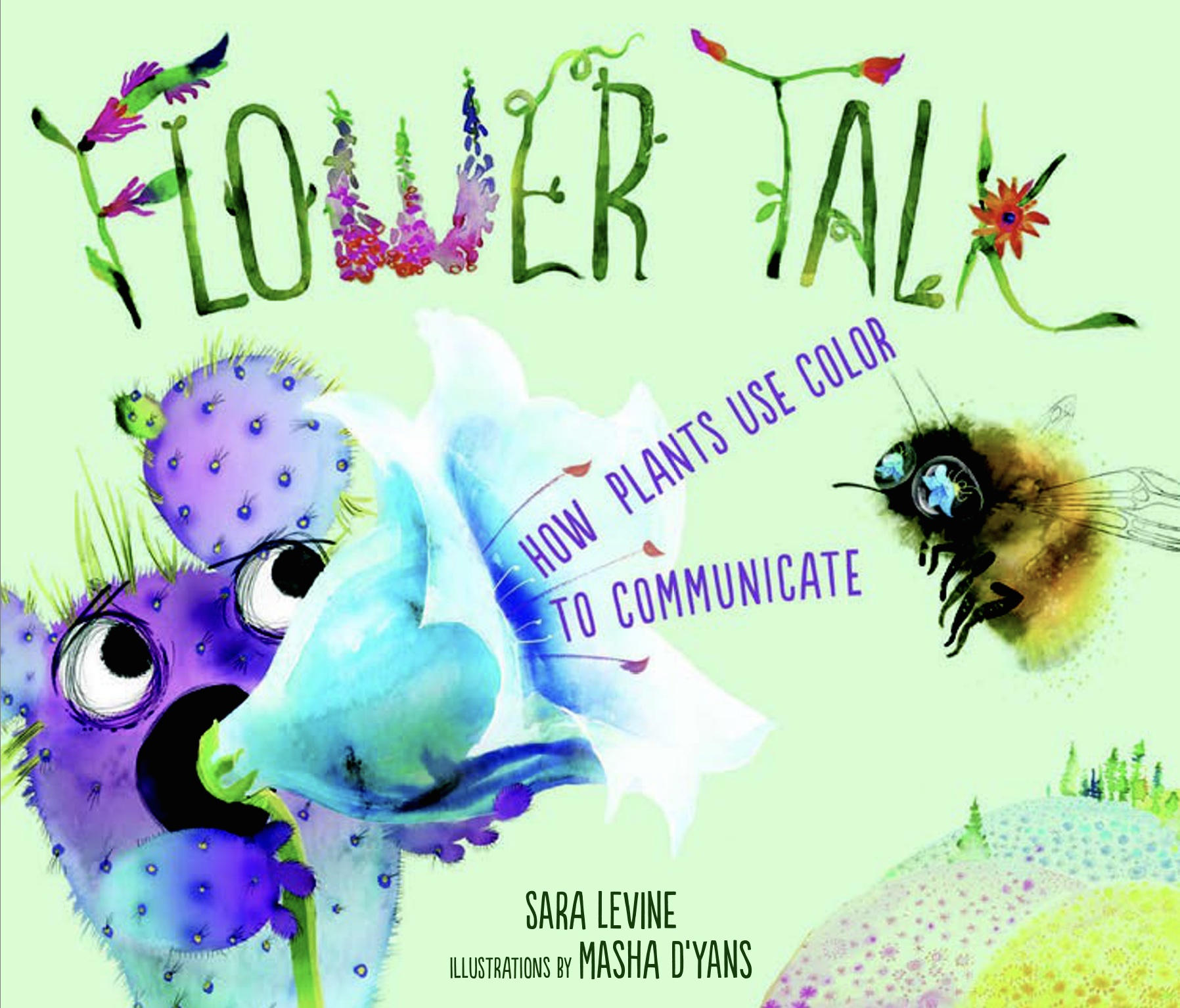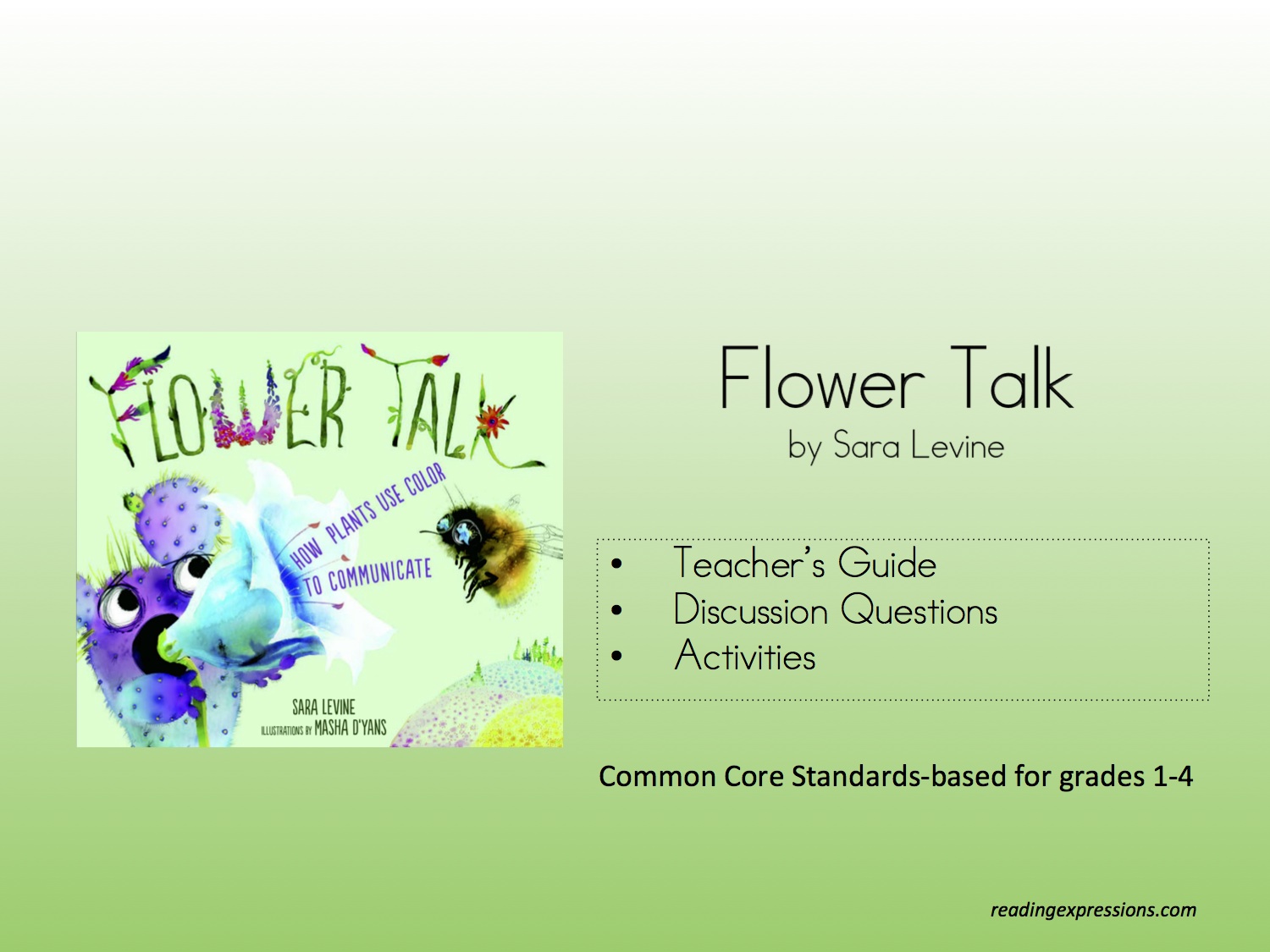How do plants communicate with animals?

By Sara Levine
Flower Talk is a nonfiction picture book about the symbiotic relationship between flowers and animals and it is told from the point of view of a very cute little cactus. As a former teacher, I was practically giddy while reading through this book because it speaks so perfectly to elementary aged kids. It is informative, witty, and full of beautiful watercolor illustrations, and I am sure that this book would keep an entire class fully engaged.
I learned something new from reading this book as well! I knew that flowers are often brightly colored and fragrant because this makes them attractive to bugs and birds, but what surprised me was that specific colors and smells attract certain animals. For example, flowers that are blue, purple, and yellow attract bees, whereas red flowers are primarily pollinated by birds, because bees cannot see the color red.
I give this book five stars because of its clear and engaging message, and because it would fit seamlessly into a series of lessons on living systems and symbiosis, as well as a unit about plant life cycles.
TEACHERS: This book focuses on the interdependence of plants and animals (In this case, plants provide the animals with food, and the animals spread pollen between plants, which allows them to produce seeds and for new plants to grow). This directly connects with a 2nd grade science standard according to the Next Gen Science Standards (Plants depend on animals for pollination or to move their seeds around).
You can also use it to address nonfiction reading standards from the Common Core, such as main idea, and asking and answering questions. (See below for text from Common Core Standards)
Discussion Questions
Before reading:
- What do you already know about flowers?
- Why do you think some plants have flowers?
- Why do you think flowers come in different colors?
- Do all flowers smell good? Do some flowers smell bad?
- Where do you think seeds come from?
- Why are seeds important?
During the read aloud:
- What do you think plants might want to communicate to animals?
- What do animals help plants do?
- How do some flowers help moths and bats find them at night?
- Why do some flowers smell like rotten meat?
- What is special about green flowers?
After reading:
- What was this book mostly about?
- How do flowers attract animals like bugs and birds? What are some examples?
- What was something new that you learned from this book?
- If you were going to plant a garden, which color flowers would you prefer to plant? Why?
Activity Ideas
- Design a flower that would attract a bird. What color is it? Does it have a smell?
- Imagine that you are a butterfly or a bee. Draw a garden of your favorite flowers.
- Do bees, bugs and birds really prefer certain colors? See for yourself! Visit an area with lots of flowers at a local garden, or your backyard if you have flowers there. Find a quiet place where you can sit and watch the flowers. Make a list of the types of animals you see visiting the flowers (bees, birds, butterflies, ladybugs, etc.) and next to the name of the animal, write the color of the flower it went to.
Click Here to purchase this book from Amazon (affiliate link)
Download the Teacher Guide below for a full lesson plan, which includes discussion questions and Common Core Standards for grades 1-4.



Thank you for putting this together – we are reading this with second graders in Cleveland, OH.
LikeLike
I’m so glad it’s useful! Thank you for letting me know, I hope your second graders enjoy the lesson!
LikeLike